Cats
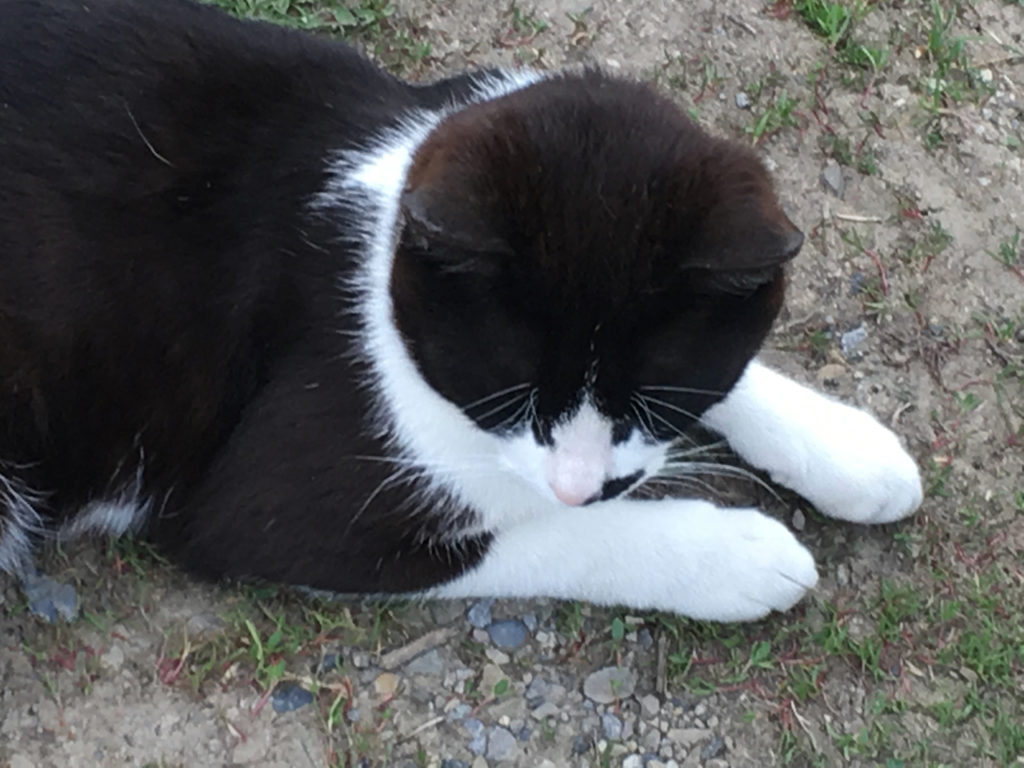
If you have visited our farm, you have most likely encountered one or more of our cats. Though they are hard working farm cats keeping the mice population in check, they are very friendly and love attention. They roam over nearly the whole farm and are a key part in our environmentally friendly pest control.
Laying Hens
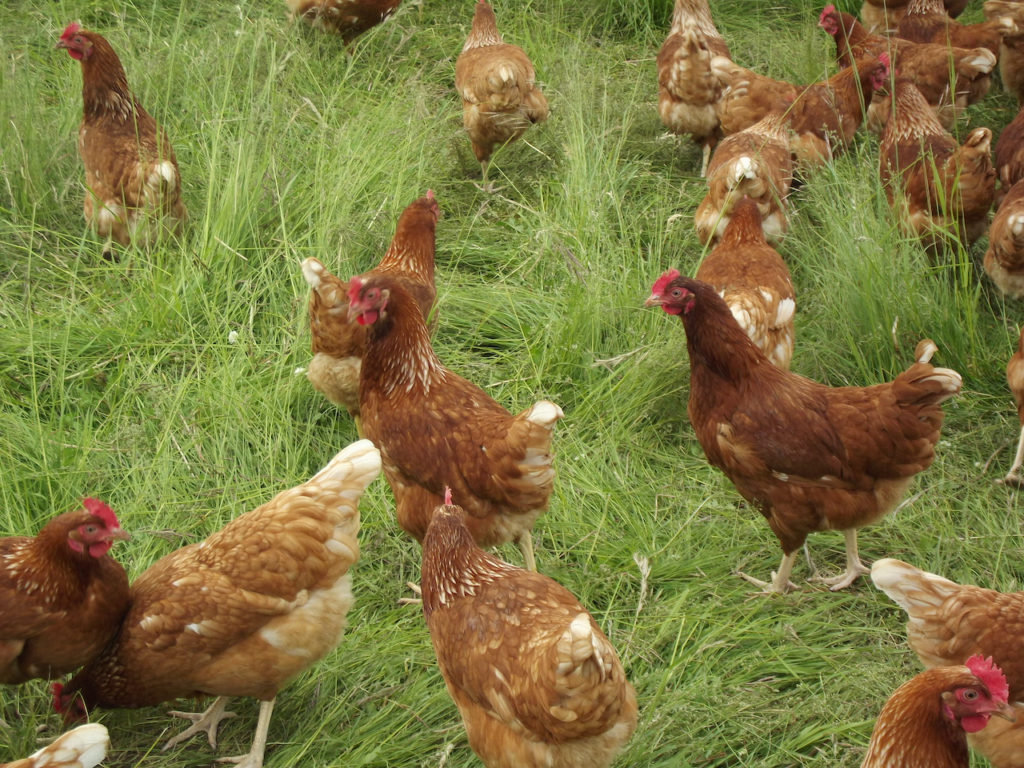
Our eggs come from our egg laying hens. They have been bred to lay eggs, and that is what they do. We feed them whole wheat blended with a little supplement to bump up the vitamins and minerals that might be missing from the wheat and the pasture. From April until roughly November, they are out in portable chicken tractors that are moved every other day onto fresh grass. The rest of the time they are in their winter coop with outside access and in addition to their regular feed we provide them with leafy green foods so their eggs continue to look and taste great. How great do our eggs taste you ask, we have guests to our farm who drive out specifically from Calgary just to pick up some eggs. Yes, they are that good. An added benefit to have pastured eggs is, as we move their tractors across the field the chickens by nature love to scratch the soil and this incorporates all the top material into the soil, aerating the soil and incorporating their manure which is an excellent natural fertilizer thus causing the soil to be healthier and the pastures to grow better. We take care to ensure that our chickens are only on each piece of ground once in a year and this helps keep our flock healthier, and more resistant to illness. We do not “push” our chickens for maximum production so we have our laying hens far longer than the industry normal.
Meat Chickens
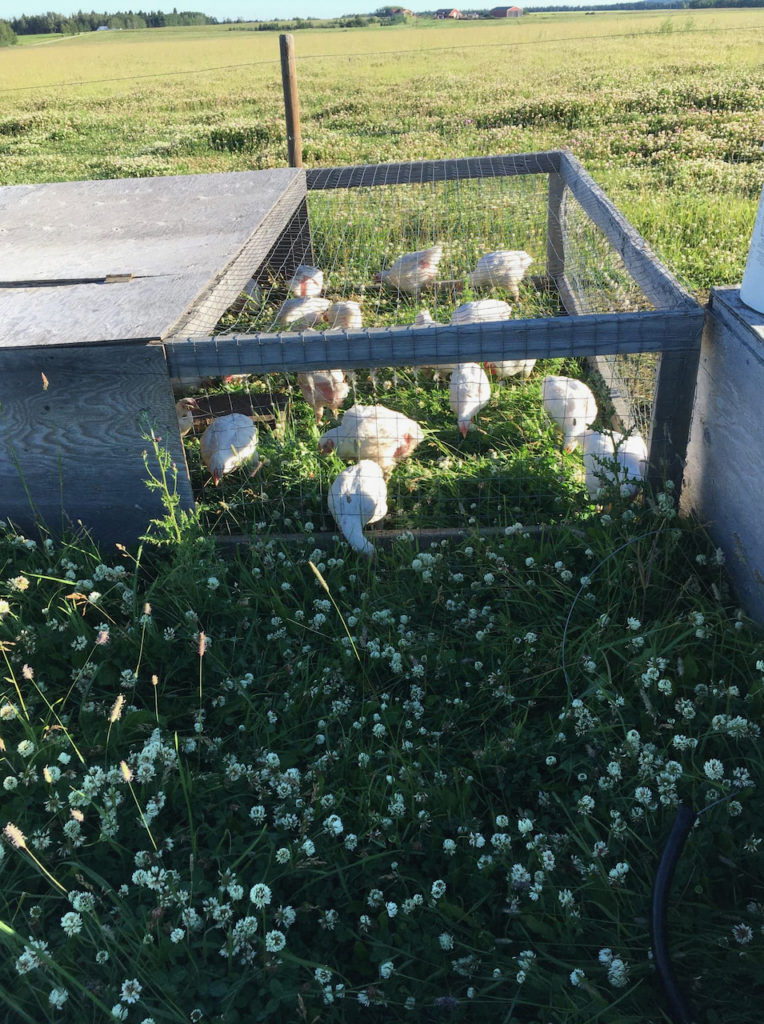
We get our meat chickens as day old chicks and we raise them 11 to 12 weeks, weather dependant. They are bred for meat, and they grow fast and delicious. We grow them in a warm environment until they have all their feathers and then they are moved outside into smaller chicken tractors. The tractors are moved every day onto fresh grass and they are fed a blend of commercial grower and whole barley. As with the laying hens, they eat all the grass in their pen, scratch the surface of the soil and fertilize heavily. The first year we made the mistake of raising them on the lawn, the lawn grew so fast and thick we were always mowing that strip. These chickens are incredible at improving the soil, after a few years of raising them on one pasture with only one pass per year, the grass would grow so lush that I was having a difficult time pulling the pen forward onto the fresh grass. I had to switch pastures, and even with only one pass of the chickens, over a year later you can still see the definite line where the chickens were the previous year. I find this exciting as it is proof that we are actively improving our soil. And as the soil improves, it is able to grow more food, and the more that we are able to keep the grass actively growing, the plants are naturally taking CO2 out of the air, turning some into fresh oxygen, and storing or sequestering the CO2 underground where it helps the plants grow better. Once the chickens are up to size, we take them to a government inspected facility where there are processed, air chilled, and bagged. Once they are back here on the farm they are frozen, ready for sale either are whole chickens or cut into pieces for easier cooking. Chicken that tastes like chicken!
Pigs
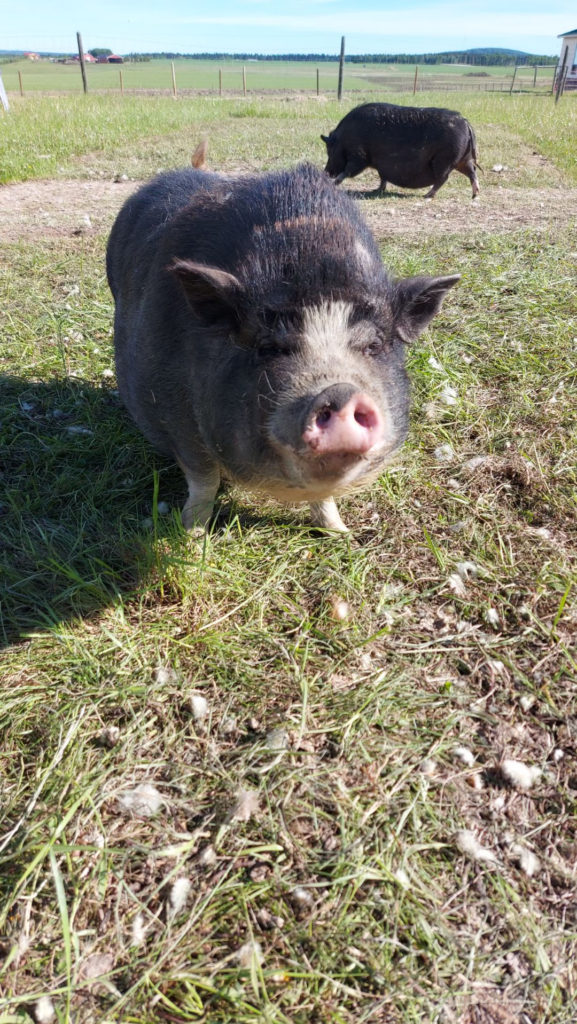
We also have two pot-bellied pigs on our farm that serve no economic purpose other than I think they are fun to have around. They do like to root around in the sheep’s feed pile and eat the spoiled fruit and veggies from the farm and our house, and as they are rooting around they are helping the composting process. In the winter, the baby lambs like to snuggle in the pig house with the pigs.
Sheep
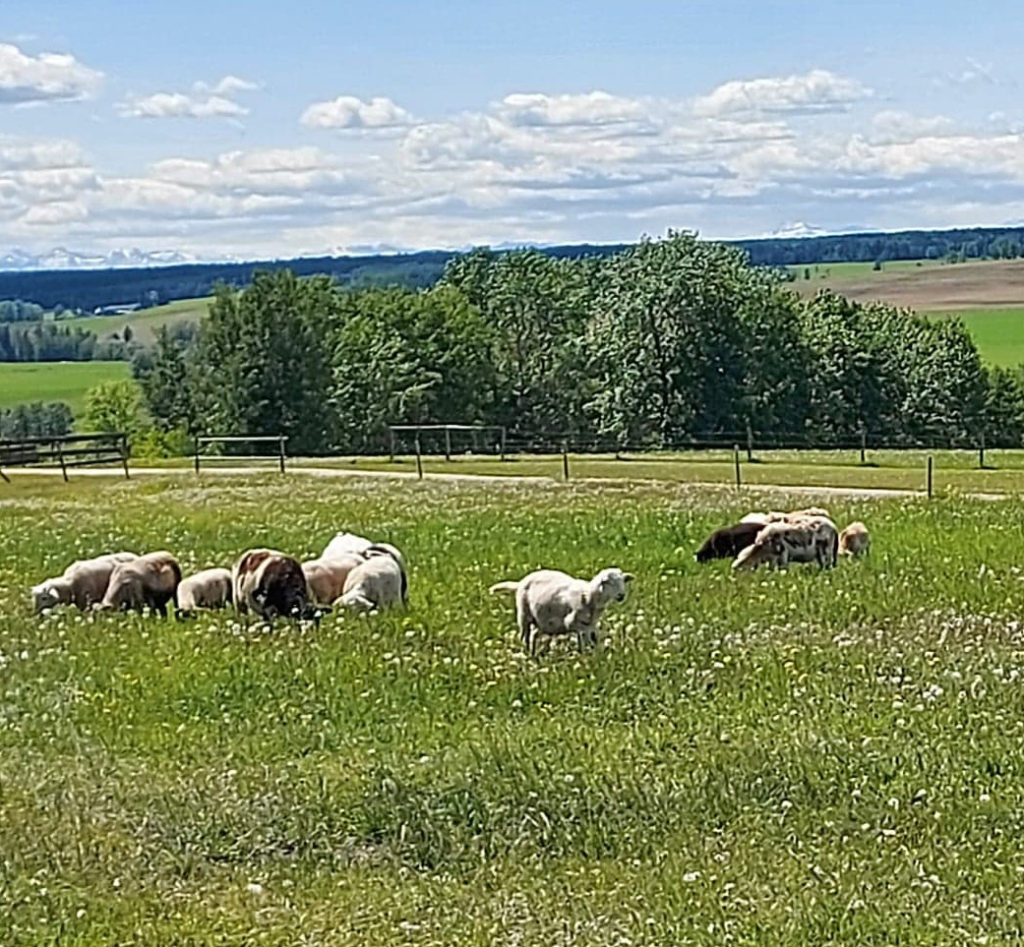
We also raise Katahdin meat sheep, which and have a milder taste than most lamb you may have tried. They do not have wool as you would most likely expect from sheep and they have hair and instead of needing to be sheared in the spring, they merely shed off their winter coat the same as a dog would. So if you see our flock in the middle of them shedding out, that is why they look so ridiculous. They are very hardy and for us, they prefer to have their lambs in January and February, and generally they have no issue with the cooler temperatures. I have seen a baby lamb under 10 minutes old, up and standing. We raise our sheep on grass in the summer and hay in the winter, and as they are not fed grain to fatten them up quicker, our lambs are not ready until the fall, when they are taken to a government inspected processing facility and are ready for us to sell either as a whole lamb package or retailed by the piece. Throughout the summer, we rotate the sheep to different pastures so we can do our best to ensure the grass keeps growing at the best rate possible. By rotating the flock around, this also helps keep the flock healthier, and we are able to grow our sheep without the use of antibiotics. Due to the many predators around, we lock our sheep into their “safe pen” every night, and then let them out every morning. As sheep tend to be very picky eaters, in the winter some of the waste hay from the sheep gets recycled as bedding for the chickens and the pigs. The hay that cannot be reused gets composed the following summer, and that provides us with the excellent compost that we use to grow and fertilize our fruit and veggie crops. We do our best to ensure that nothing gets wasted on our farm.
Donkeys
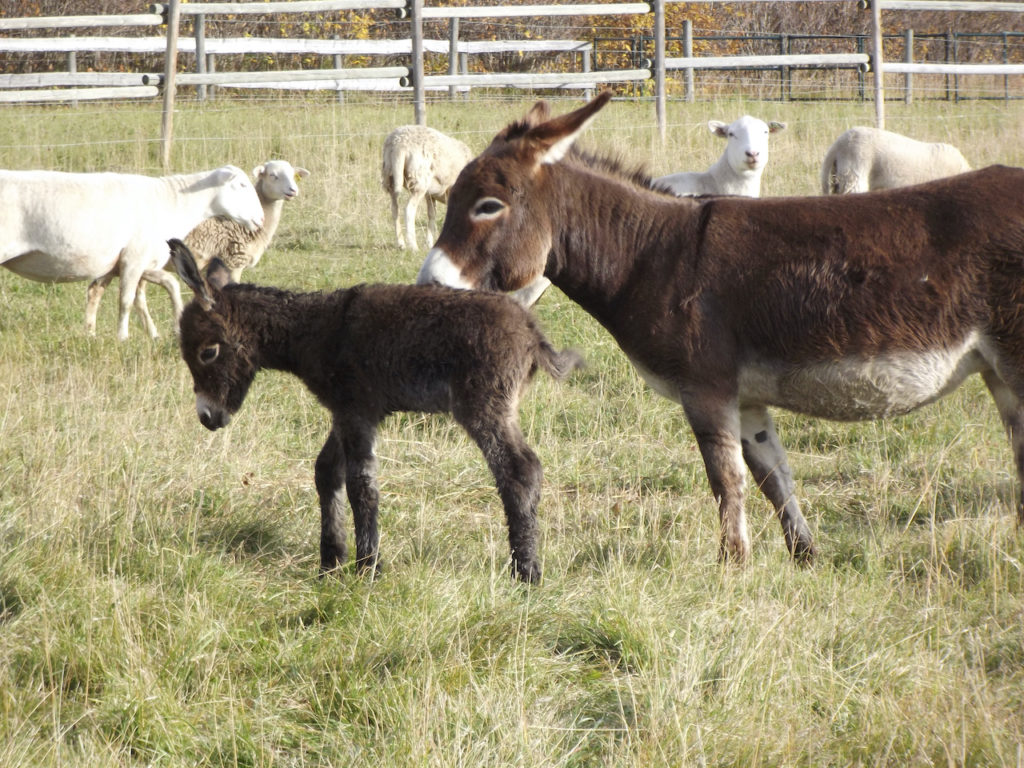
In with the sheep, you may notice some miniature donkeys. They also serve no real economic purpose to our farm, our son wanted some miniature donkeys, so he purchased some and raises them. On most days they are very friendly and sociable and enjoy getting scratched and their braying adds colorful variety to our farm’s sounds.
Cattle
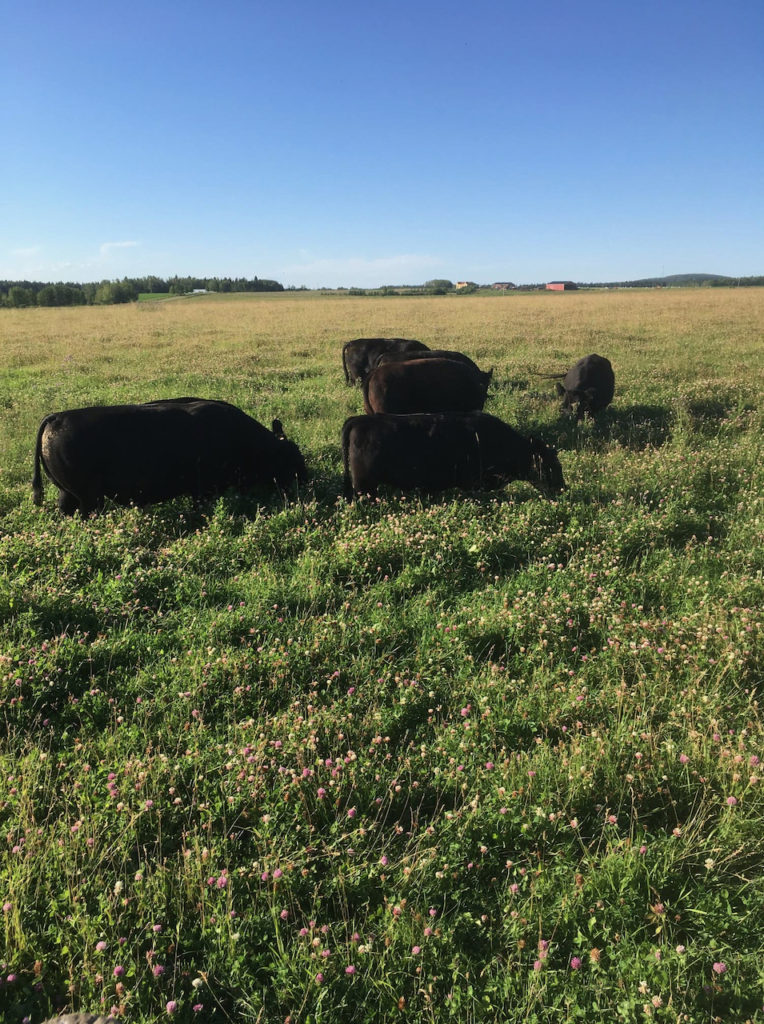
The last addition to our farm has been our beef cattle. We have raised commercial beef cows in the past, and after a few years of not having cows around, we got back into the cattle side with our special cows. The cattle we raise are Lowline Black Angus, they are not miniature cattle, but they are considerably smaller than conventional cattle. They have been bred for decades to fatten or finish on just grass, and our cattle have the genetics so that they can have the fat marbling in the meat just like grain finished beef with all the health benefits of grass finishing. The benefits of this for you is you can get top graded beef with all the health benefits of grass finished beef with the ease of cooking commercially produced beef. As with our sheep, all of the beef we sell is born on our farm and raised by us so we can ensure it is grown how we want it. With the rare exception, all beef around the world is raised as grass fed as all calves spend the first summer out with the cows on pasture, and then they traditionally go to feedlots to be finished by being fed various grains and forages. We have chosen to feed our cattle grass or hay alone. This means it takes us a bit longer to get them ready for processing, as ours are finished around 24 to 26 months, but they taste great. We also use the rotational grazing concept with our cows and depending on how the grass is growing, they move to a different paddock every 3 to 5 days. This keeps the grass actively growing and as a by-product of actively growing grass, more C02 is sequestered in the soil and this in turn helps the soil be more productive and resilient. Even in the winter, we feed them in different areas around the farm so the manure is naturally spread around and we do not have a big buildup or run off of the nutrients.